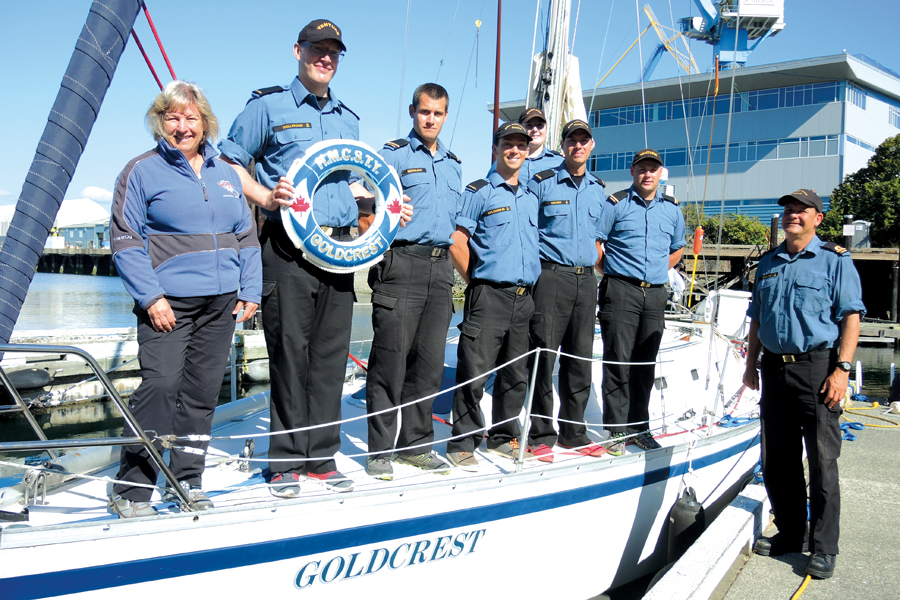Goldcrest puts the wind in sailors’ sails
By Lookout on Aug 03, 2017 with Comments 0

Members of the Naval Fleet School (Pacific) Sail Training Program aboard Sail Training Vessel (STV) Goldcrest before departing for training. Photo by Peter Mallett, Lookout Newspaper
Peter Mallett, Staff Writer ~
Royal Canadian Navy sailors are on the water this summer to develop their basic seamanship skills in Sail Training Vessel (STV) Goldcrest.
The three-decade old, 36-foot CS 36 Sloop rigged sailboat yacht was adapted by the military for sail, adventure, and navigation training. Last year, the Sea Training Centre in Naval Fleet School Pacific launched a sailing program for new recruits enrolled in the Canadian Forces Regular Officer Training Program (ROTP). Since then, more than 150 officer cadets have boarded Goldcrest and headed out Esquimalt Harbour for an on-the-water experience far different than a warship platform.
“The seamanship learned on a sailboat makes a sailor a better Maritime Surface and Subsurface Officer [MARS],” says Edith Eaton, Officer in Charge of the Sailing Program. “The skills learned on a sailboat apply to all trades and occupations of the navy. For example, a new MARS officer can be in command of a small vessel, learn all of its intricacies and systems, and how they work together, and then in turn have a better appreciation of what it takes to operate an RCN vessel.”
Most officer cadets participating in the program have no prior sailing experience, and spend one to three weeks with up to a crew of eight. Their successful completion of week one can earn them a competent crew certification by the International Sail and Power Association for their sailing, anchoring, docking, and crew overboard skills.
They may earn more advanced Day Skipper certification if they complete a second week in the program, and Coastal Navigation for those who do all three weeks of study.
Students may also receive Transport Canada Pleasure Craft Operator certification (PCOC).
Naval Cadet Alexander Nicholson says the program is giving him an intricate understanding of tides, winds, changes in weather, ship and crew management, interpersonal skills, and leadership.
“This program is the closest interaction I have had with the maritime environment,” he says. “Driving small vessels is an ideal starting point for me and I also believe many others. I’m more accustomed to training in an operations room without a window or classroom, but once I am onboard [Goldcrest] this world changes dramatically, and when I’m outside on the deck of a boat it seems to become faster and more complex.”
He adds the vessel is essentially a microcosm of a modern war ship and that he and his peers are required to work together and learn every job and function.
About three quarters of training time is spent at sea, says Eaton, with the remainder of time in-class where officer cadets receive a detailed course curriculum and testing.
Goldcrest is one of two vessels used for sail-training, the other being sister sailboat STV Tuna, which is currently based on the East Coast at CFB Halifax. However, with plans to get even more students out on the water, increasing enrolment to 300, STV Tuna is being transported from Halifax to the base via transport truck and is expected to arrive in the coming days.
Filed Under: Top Stories
About the Author:





